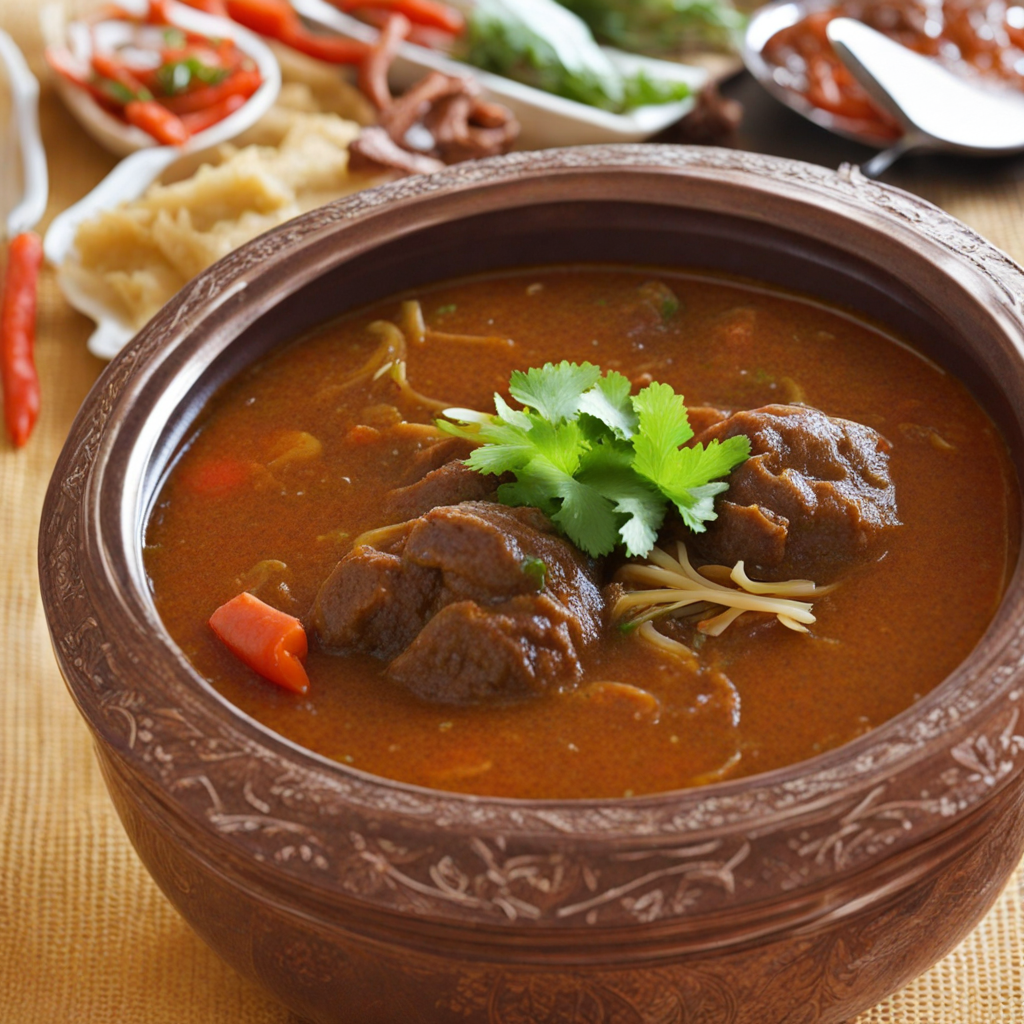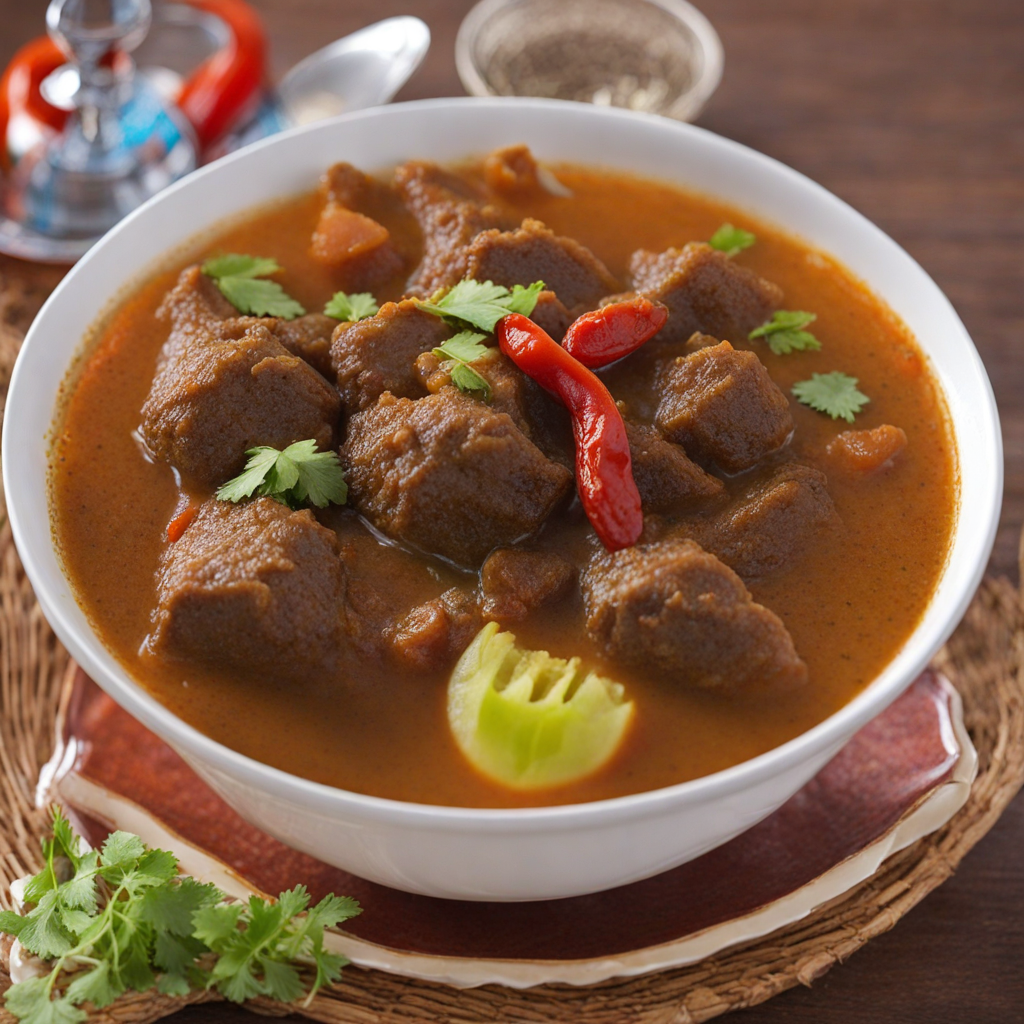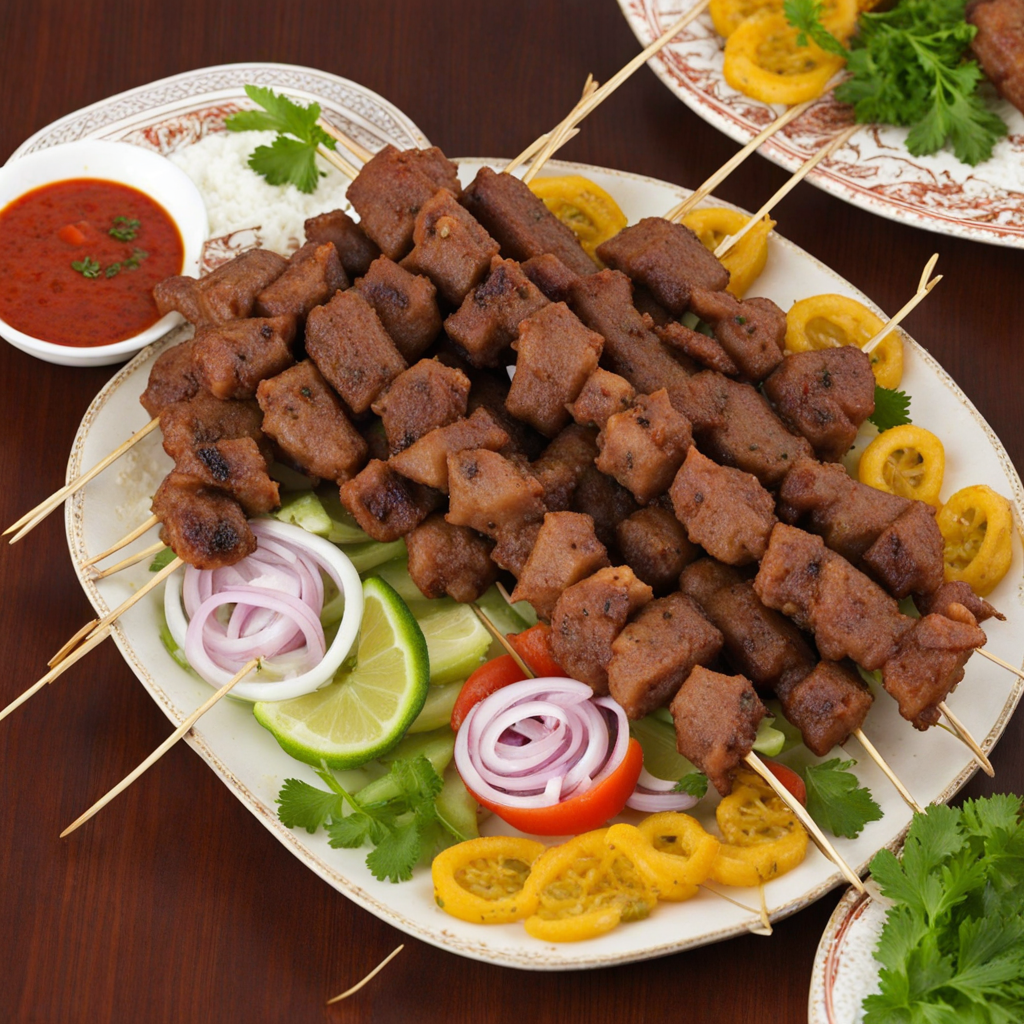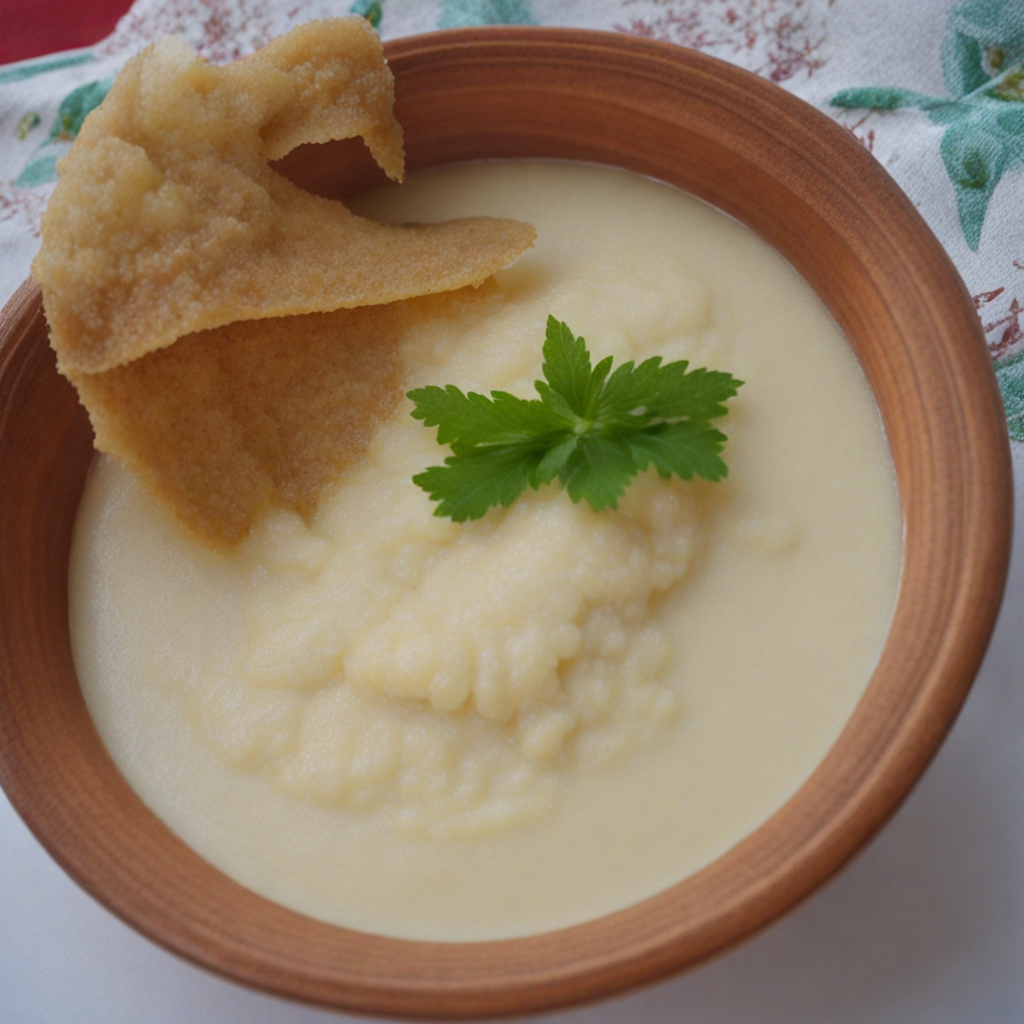Fah-fah
Fah-fah is a traditional Djiboutian dish that showcases the rich flavors and culinary heritage of the region. This hearty meal primarily consists of a delightful blend of spiced meat, often chicken or lamb, which is slow-cooked to tender perfection. The meat is typically marinated in a mixture of local spices, including cumin, coriander, and black pepper, which infuse each bite with warmth and depth. Accompanying the meat are generous portions of fresh, colorful vegetables such as carrots, potatoes, and sometimes even chickpeas, all simmered together in a fragrant broth that elevates the dish to a comforting level. The unique aspect of Fah-fah lies in its robust broth, which is often thickened with a base of ground lentils or chickpeas, providing a velvety texture that coats the ingredients beautifully. This rich sauce is not just for flavor; it also serves as an accompaniment to the staple Djiboutian bread, known as 'lahoh,' which is perfect for scooping up the savory goodness. When served, Fah-fah is generally accompanied by a side of spiced rice or the traditional Somali rice dish, 'bariis iskudhexkaris,' making it a complete and satisfying meal that warms the soul. Fah-fah is often enjoyed during family gatherings and celebrations, and its preparation is a labor of love that brings people together. The communal aspect of sharing this dish enhances the experience, as each person can savor the rich flavors while enjoying the company of loved ones. For those looking to explore new tastes, Fah-fah offers an inviting journey into Djibouti's culinary landscape, merging spices and textures that create a delightful and memorable dining experience.
How It Became This Dish
The History of فح فح: A Culinary Jewel of Djibouti #### Origins of فح فح فح فح (pronounced "fah fah") is a traditional dish that reflects the rich tapestry of Djibouti’s culinary heritage. This East African nation, strategically located at the crossroads of the Red Sea and the Gulf of Aden, has long been a melting pot of cultures, influenced by its geography and history. The dish is primarily made from goat meat, often cooked with a mélange of spices and served with a side of rice or flatbread, making it a quintessential representation of Djiboutian cuisine. The roots of فح فح can be traced back to the nomadic tribes of the region, particularly the Somali and Afar peoples. These communities relied heavily on livestock for sustenance, and goat meat, being a staple protein source, became integral to their diets. The preparation of فح فح likely evolved from traditional methods of cooking meat over open flames, a practice that is prevalent in many pastoral cultures. The use of spices, which were historically traded along ancient trade routes, is a testament to the region’s connections to both Africa and the Middle East. #### Cultural Significance The cultural significance of فح فح extends far beyond its ingredients and preparation. In Djibouti, food is a central element of social life, and meals are often communal events that strengthen familial and social bonds. فح فح is frequently served during celebrations, festive occasions, and communal gatherings, symbolizing hospitality and generosity. The dish brings people together, whether at family feasts, weddings, or religious holidays, where it acts as a centerpiece around which stories and laughter are shared. Moreover, فح فح carries a sense of identity for the Djiboutian people. As a dish that reflects the local ingredients and culinary practices, it embodies the spirit of Djibouti’s diverse cultures. The interplay of flavors in فح فح—a balance of spices, tenderness of the meat, and the warmth of shared meals—serves as a reminder of the country’s rich history and the resilience of its people. #### Development Over Time As Djibouti navigated its colonial past and moved toward independence in the 20th century, the cuisine, including فح فح, began to reflect the influences of its colonial rulers while maintaining its indigenous roots. French colonialism introduced new cooking techniques and ingredients, which blended into the existing culinary traditions. For instance, the incorporation of garlic and onions into the spice mix for فح فح can be attributed to this fusion of culinary practices. In contemporary Djibouti, the dish has continued to evolve, with variations emerging that appeal to modern tastes. While traditional فح فح is typically prepared in large quantities for gatherings, urbanization and globalization have led to the emergence of smaller, more accessible versions that can be found in local eateries and street food stalls. Additionally, the rise of social media and food tourism has brought greater visibility to Djibouti’s culinary heritage, leading to renewed interest in traditional dishes like فح فح. The rise of culinary festivals and events celebrating Djiboutian cuisine has also played a role in the revitalization of فح فح. Chefs and home cooks alike are experimenting with the dish, adding their own unique twists while honoring the traditional preparation methods. This blend of innovation and tradition has allowed فح فح to maintain its relevance in a rapidly changing culinary landscape. #### Ingredients and Preparation The preparation of فح فح involves a careful selection of ingredients that speak to the local agricultural practices and climate. The primary component is goat meat, often favored for its flavor and tenderness. Spices such as cumin, coriander, and chili peppers enhance the dish, reflecting the diverse spice trade that has historically passed through Djibouti. To prepare فح فح, the meat is typically marinated with these spices and then slow-cooked to allow the flavors to meld. This method not only tenderizes the meat but also infuses it with the aromatic spices, resulting in a dish that is both flavorful and comforting. Traditionally, the dish is served with a side of rice, which acts as a neutral base to balance the richness of the meat. Another popular accompaniment is the traditional flatbread known as “lahoh,” which is a spongy, pancake-like bread that is perfect for scooping up the meat and sauce. The combination of فح فح with rice and lahoh provides a well-rounded meal that satisfies both hunger and the desire for communal sharing. #### Fح فح in Modern Djibouti In the present day, فح فح has become emblematic of Djibouti’s culinary identity. It is not only a dish enjoyed at home but also a symbol of national pride. As Djibouti continues to position itself on the global stage, the promotion of its culinary traditions, including فح فح, has become an integral part of its cultural diplomacy. Tourism has also played a role in the evolution of فح فح. As visitors flock to Djibouti to experience its stunning landscapes and vibrant culture, they are introduced to the local cuisine. Food tours are increasingly popular, allowing travelers to sample traditional dishes and engage with local chefs. In this context, فح فح serves as an ambassador of Djiboutian culture, providing a delicious gateway for outsiders to connect with the history and heritage of the nation. #### Conclusion The history of فح فح is a rich narrative that intertwines the cultural, social, and historical fabric of Djibouti. From its origins in the pastoral practices of nomadic tribes to its status as a beloved dish served at communal gatherings, فح فح encapsulates the essence of Djiboutian identity. As the world continues to embrace culinary diversity, فح فح stands as a testament to the resilience of tradition while simultaneously evolving to meet contemporary tastes. This dish not only nourishes the body but also nourishes the spirit, reminding us of the power of food to connect people across cultures and generations.
You may like
Discover local flavors from Djibouti







